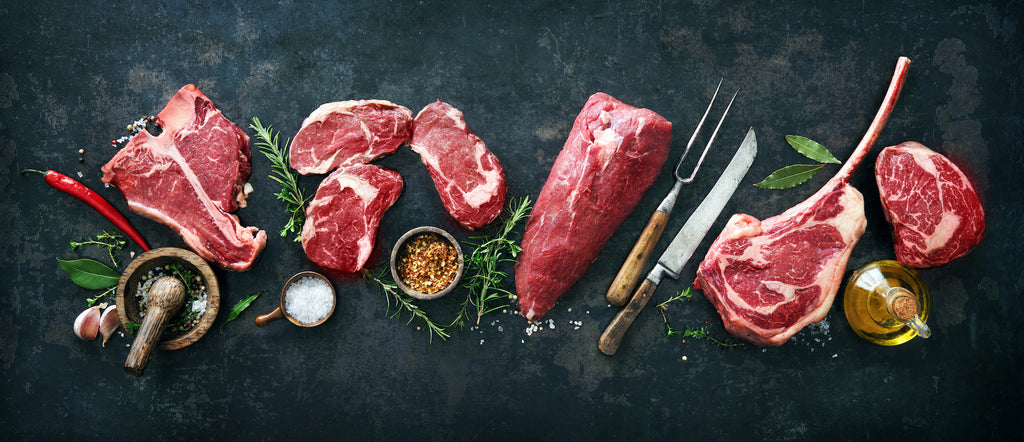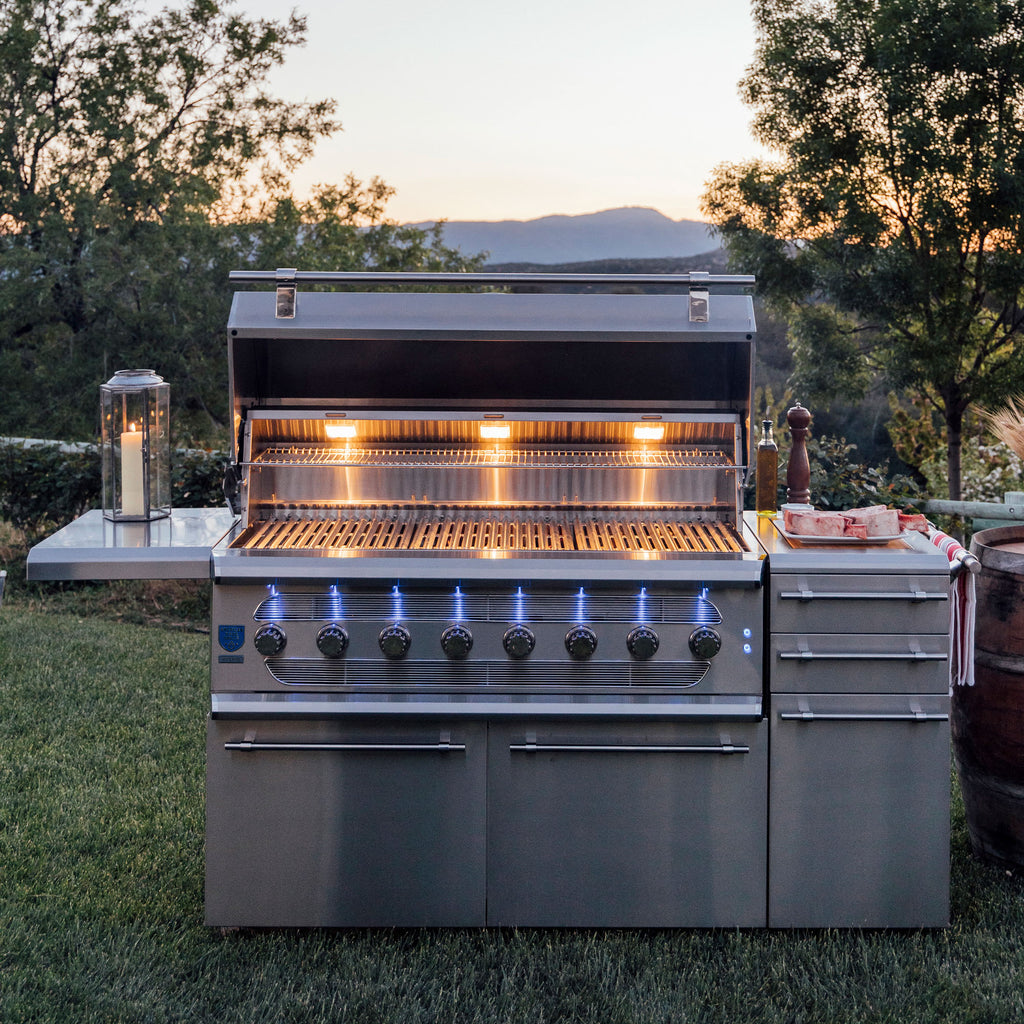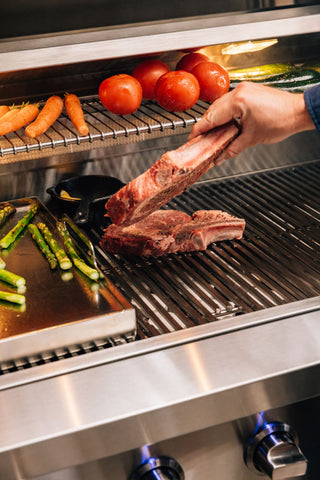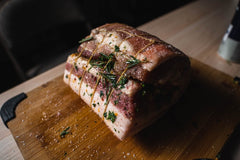Grilling 101: The Basics Of Grilling Beef
No matter the season, outdoor barbecues with friends and family have become a cherished American tradition. Whether sizzling burgers or succulent steaks, grilling and beef are the perfect companions. To ensure your weekend grilling extravaganza is a blazing success, we're continuing our Grilling 101 Series with "The Basics of Grilling Beef." Whether you're a novice with a gleaming new grill or a seasoned pro, we've got you covered with essential techniques to get you started.
Grilling can seem daunting at first. Cooking over an open flame may not always be a walk in the park, and many people find it challenging to dive in. But fear not; grilling beef can be a breeze if you follow a few fundamental guidelines. Whether you're craving a juicy ribeye, tantalizing carne asada, mouthwatering burgers, or delectable steak kebabs, we've all the tips and tricks to ensure a perfect grill every time. Cooking over an open flame is rewarding and exciting. Still, it also allows you to experiment with various flavors by adding spices or sauces before and during cooking. Get ready to ignite your taste buds and elevate your grilling game!

The Basics Of Grilling Beef: Preparation
The many different cuts of beef all require a slightly different preparation before they are placed on a hot grill. Some may need trimming or boning, while others might even require tenderizing first. Read this guide for tips about what you should do with your meat beforehand.
Boning & Trimming
Some beef cuts that contain an overabundance of fat may require some boning and trimming. While the flavor is in the fat, too much can create flare-ups, cause excessive burning, and make for a poor dining experience. Cutting away the excess fat or removing extra bones can all be done while the grill preheats, but it is essential to leave at least 1/8" of fat on the meat, or you will not seal in the juices as well.
Prep the Fat
When grilling thinner steaks of half an inch to one inch, it is best to slash the fat around 1-inch intervals to reduce curling. Cuts with a thickness of over an inch should maintain their shape without this step.
Tying or Wrapping
Some beef roasts may require tying to maintain the shape during grilling and allow it to cook evenly. Beef cuts that have already been boned are often rolled up and then tied with a string for cooking purposes, so they'll offer more even temperature distribution and make slicing easier afterward.
Tenderizing
Since beef is muscle tissue, it can benefit from tenderizing to yield a more tender and succulent texture. There are several ways to tenderize your beef before grilling it:
- Pound the meat with a mallet or rolling pin. Place the steak on a cutting board or butcher block, and lay a large plastic wrap on top to reduce splattering. Using a kitchen mallet, pound the steak evenly to break up the tissue.
- Another method is using a marinade from an hour before grilling to overnight so that the flavors can penetrate the surface of each steak.
- Use a rub of salt, pepper, and any other favorite spice. Thoroughly rub the mixture onto every inch and allow it to sit and tenderize while refrigerated.
The Basics Of Grilling Beef: The Heat

You can achieve a perfect steak by mastering some basic grilling techniques of using heat. The first step in creating that tantalizing crust is searing it over high, using direct heat to create those beautiful grill marks, and sealing the juices inside. For roasts, on the other hand, you want a nice brown exterior with an evenly cooked interior so they don't dry out when cooking them at low temperatures.
Understanding direct and indirect heat is paramount in grilling various cuts and thicknesses of beef.
- Direct Heat - Grilling over direct heat is accomplished by placing cuts of beef directly on a grate over the source.
- Indirect Heat - Grilling with indirect heat allows larger, thicker cuts of beef to cook thoroughly without the surface burning. Indirect heat can be combined with direct heat for better results by finishing off seared meat over indirect heat.
For more information about direct and indirect heat and how to use them, check out "Grilling 101: What is Direct Heat and Indirect Heat?"
The Basics Of Grilling Beef: The Tools
When grilling steaks, use tongs or a spatula to turn the meat. It would be best never to use a fork because it pierces the beef allowing juices to escape. Hamburger patties should also be turned with a spatula and never flipped more than once during cooking, as this can cause them to dry out from excessive contact with direct heat.

The Basics Of Grilling Beef: The Beef
Thin Cuts (1/2-inch or less)
Thin steaks, strips, kebabs, and hamburgers can all be grilled in a couple of minutes per side over medium-high direct heat.
Medium Cuts (1/2-inch to 1.5 inches)
Most steaks fall in this category. To create a sear, use medium-high direct heat for 2-3 minutes per side. Then finish over indirect heat to the desired doneness.
Thick Cuts (1.5-inches or more)
Thick steaks, tri-tips, and roasts will require more time on the grill to cook throughout. Use direct heat to sear the sides, but most of the time will be over indirect heat. For roasts, grill with the fatty side facing up, allowing the fat to render into the rest of the meat.

Hamburgers
Grilling ground beef patties tend to swell or bulge in the center. Before grilling, to combat this effect, make an indentation with your thumb in the center of the patty. Grill these handfuls of joy over medium-high direct heat for a few minutes per side, depending on thickness. If desired, top with your favorite cheese during the last 30 seconds of grilling.
Rest
The resting period after the grill is vital to the flavor and juiciness of the beef. Every cut of meat will continue cooking for a couple of minutes or more after removing from the grill, so be sure not to overcook your meat. For example, if you want medium burgers, remove them at medium-rare and allow them to rest.
The Benefits of Grilling Beef

There's something about the sizzle of beef on a hot grill that just screams barbecue magic. While many people enjoy grilling beef simply for the delicious taste, there are several other benefits to cooking with this protein. Whether you're an experienced griller or a beginner, knowing the advantages of grilling beef can help you make informed decisions when planning your next barbecue. In this post, we'll explore some of the top benefits of grilling beef and why it should be your go-to ingredient for outdoor feasts.
- High Nutritional Value: Beef is one of the most nutrient-dense foods available and is packed with essential vitamins and minerals like iron, zinc, and vitamin B12. When grilled properly, beef retains much of its nutritional value making it a healthy option for those looking to maintain a balanced diet.
- Versatility: There are endless ways to prepare beef on the grill, from classic burgers and steaks to more elaborate dishes like grilled skewers or brisket. This versatility means that there's something for everyone at your next barbecue, no matter their dietary restrictions or preferences.
- Affordable Option: Despite its reputation as a luxury food item, beef can be affordable when purchased in bulk from local farms or butchers. This makes it perfect for feeding large groups without breaking the bank.
- Reduced Fat Content: When cooked on a grill at high temperatures, excess fat drips away from the meat, resulting in a leaner final product. This means you can indulge in your favorite cuts of beef without worrying about consuming excessive amounts of saturated fat.
- Social Experience: Grilling beef is often seen as a social experience where friends and family gather around the grill to cook and enjoy each other's company. This creates lasting memories while also providing an opportunity to learn new techniques and recipes from one another.
Grilling 101: The Basics Of Grilling Beef - What's on the Menu?
Whether you're a seasoned griller or just starting, there's no denying the benefits of choosing beef as a protein source for outdoor feasts. From its high nutritional value to its affordability and versatility, beef is a delicious and healthy option everyone can enjoy. So, fire up the grill, gather your loved ones, and treat yourself to some mouthwatering beef no matter the season!
There is nothing like that bite of crunchy and tender carne asada or the salty, crusty taste of a ribeye steak. Whatever your beefy fancy, these essential tips and techniques will get you closer to showing off your grilling skills instead of guessing your way through.
In the next installment of Grilling 101, we will delve into the basics of grilling pork and lamb, exploring their unique flavors and cooking techniques. So, stay tuned, and get ready to elevate your grilling game with these delicious beef alternatives that will surely tantalize your taste buds!
Need to know about grilling chicken? Take a look at Grilling 101: The Basics of Grilling Chicken to get an understanding of this versatile poultry!




